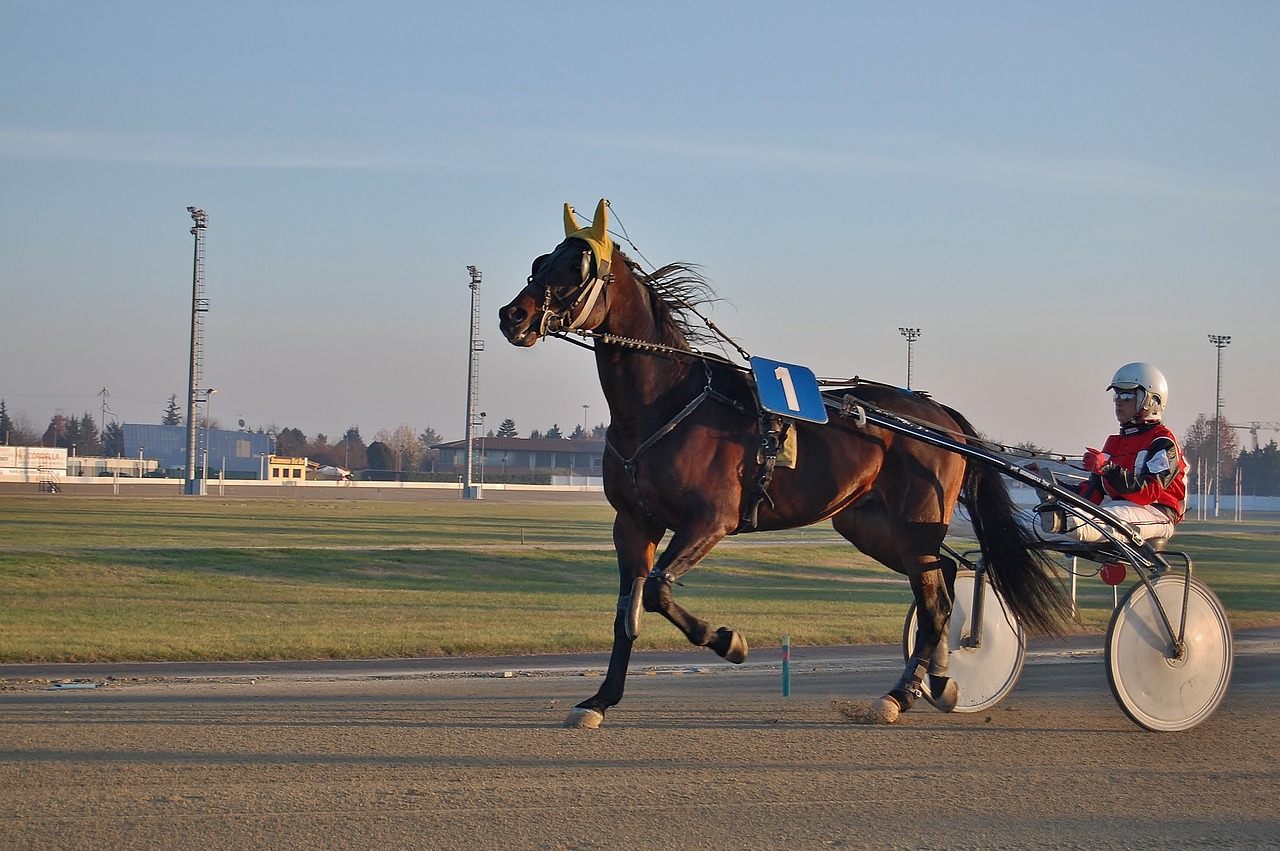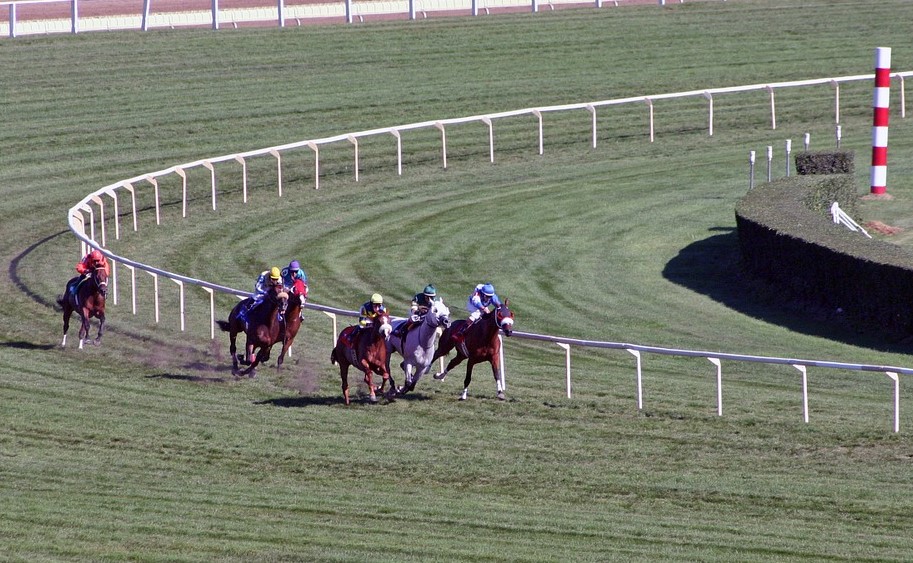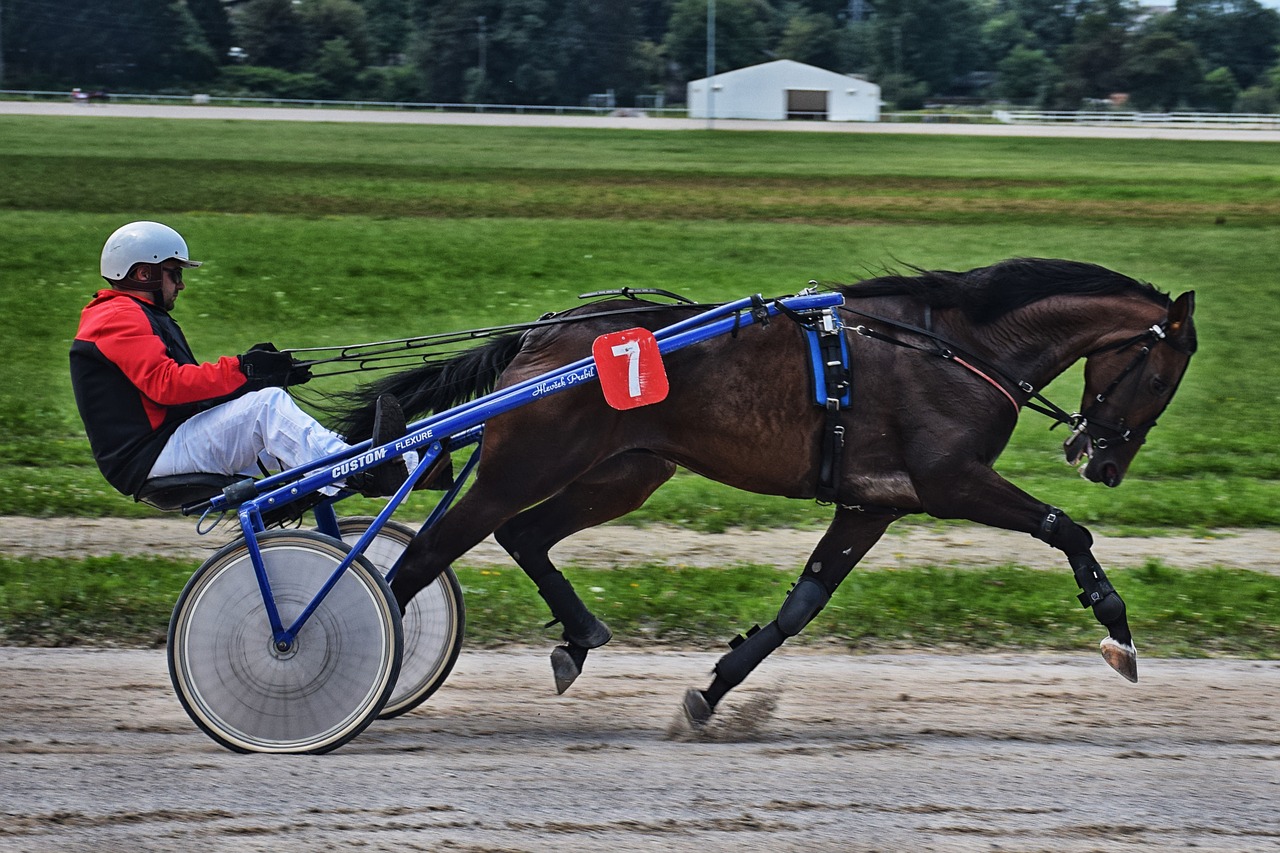What is Harness Racing?
Harness Racing is a form of horse racing where horses race in a specific gait whilst pulling a two wheeled cart called a Sulky.
Races can be conducted in two different gates; trotting and pacing. Trotters move with a diagonal gate; the left front and right rear legs move in unison as do the right front and left rear. Some trotters wear plastic loops around their front legs called hobbles which help them maintain their gate. Trotting racing is not very popular in the UK however it is the exclusive gate for races throughout Europe in countries such as Sweden, Italy and France.
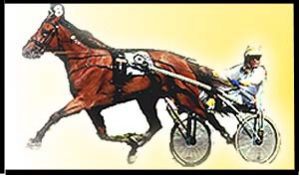
Pacers move the legs on one side of their body in tandem; left front and rear, and right front and rear. Pacing races account for almost all of the races in the UK. Pacing is also more popular than trotting in Australia and New Zealand although in Canada and the USA it’s much more evenly matched. Almost all pacers wear plastic loops around their legs called hobbles which help them maintain their gate. These connect the legs on each of the horse’s sides. Pacers are generally faster than trotters and less likely to break their stride. The belief that hobbles are used to create this gate is a misconception. The pace is a natural gate and the hobbles simply provide support to the pacer when at top speed.
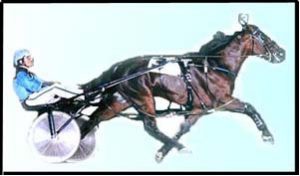
Standardbreds wear a lot more equipment in comparison to the Thoroughbreds.
Below is an image of a pacer and the various items of equipment that it might wear. Not all of this equipment is required but the image simply highlights the range of equipment that may be needed.
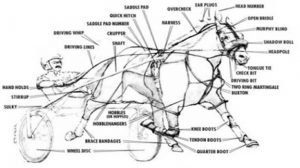
Standardbreds race in Sulkies often called carts or racebikes. They are light weight and are attached to both sides of the horses harness. The driver (not a jockey as in thoroughbred racing) sits on the Sulky to drive the horse during the race.
The race starts with the horses lined up behind a mobile starting gate which accelerates up to roughly 30mph until it reaches the start at which point the car accelerates away and the race begins.
Races are generally contested over 1 mile and 1 ¼ miles on the hard and grass tracks throughout the UK.
The Horse
Horses that participate in the sport of Harness Racing are called Standardbreds. The term Standardbred derives from way back in 1879 when horses had to trot quicker than a ‘standard’ time over the distance of 1 mile in order to be registered as part of the new breed.
The founding sire of today’s Standardbred was Messenger, a grey English Thoroughbred foaled in 1780 and later exported to America in 1788. Messenger stood at stud for twenty seasons in New Jersey, Pennsylvania and New York. He sired many great Thoroughbreds but his ability to sire trotters was incomparable, producing big, strapping horses known for their trotting action, speed, and willingness.
The direction of harness racing was fixed on May 5, 1849, by the birth of Hambletonian 10, great grandson of Messenger, in Orange County, New York. Every Standardbred can trace its legacy back to Hambletonian 10.

Hambletonian 10
In many respects, the Standardbred resembles the Thoroughbred. Standardbreds are often more muscled and longer in body; do not stand as tall and average between 15 and 16 hands. The head is bigger and some may even sport a Roman nose. This breed appears in varying colours, although bay, brown and black are predominant. It weighs between 800 and 1,000 pounds.
The Standardbred is often described as “honest”. He is hearty, pure, rugged, capable of performing any job, and is one of the equine world’s best kept secrets.
Standardbreds have great speed and stamina and this mixed with their intelligence and kind nature makes then excellent companion and riding horses. They are usually easily retrained to the saddle and can perform well in jumping, hacking and dressage amongst many other disciplines. Standardbreds are extensively used in movies which is testament to the character and adaptability of this fascinating breed.
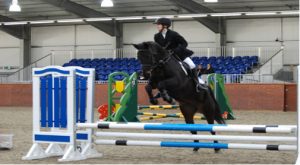
Former Corbiewood regular Red Rover enjoying semi-retirement as a riding horse.
